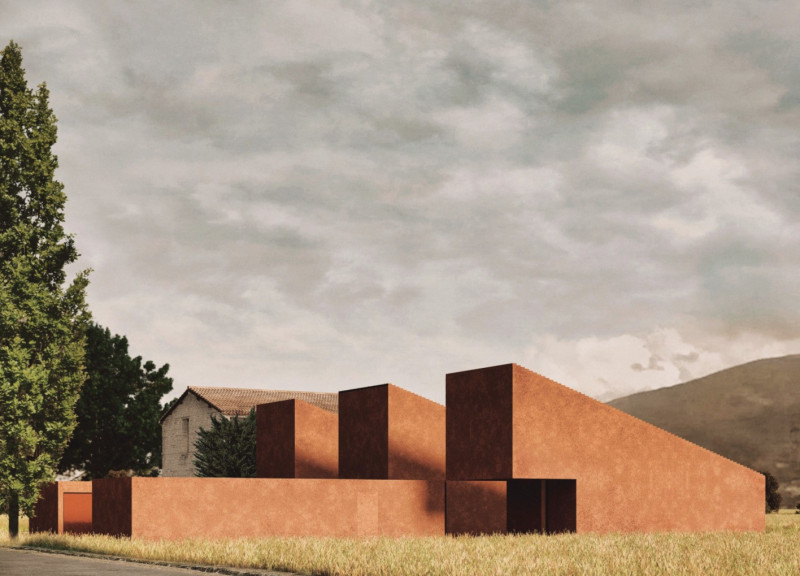5 key facts about this project
*TERRA* is situated within the scenic landscape of Tili Vini Winery, creating a space that celebrates the craft of winemaking. Its design concept emphasizes comfort and community, inviting visitors to connect with both the natural surroundings and cultural traditions. The project aims to blend historical practices with modern needs, resulting in a welcoming atmosphere for all who visit.
Design Approach
The architectural form of TERRA is carefully designed to reflect the historical context of the site. The extension maintains similar massing and tilted roofs, allowing it to fit harmoniously with the existing structure. This thoughtful design creates five separate guest houses, each featuring private outdoor spaces that provide views of the vineyards and surrounding landscapes.
Spatial Organization
Interiors are organized around two main principles: ‘ORA’ for the present and ‘TERRA’ for the past. ‘ORA’ spaces have smooth finishes and a contemporary feel, while ‘TERRA’ areas embrace a more rustic aesthetic that evokes nostalgia. This thoughtful arrangement of spaces enhances the user experience and strengthens the connection to winemaking traditions.
Sustainability and Materials
Sustainability is an important focus in TERRA. The selection of materials includes burnt cork, local brick flooring, plaster, paint, and ecoclay panels. Each of these materials plays a role in enhancing the sensory quality of the spaces. They help create an environment that is both connected to local craftsmanship and mindful of ecological impacts.
Community Engagement
The design features communal spaces that encourage social interaction among guests, an important aspect of Italian culture. The dining area preserves elements of the existing building while accommodating various social functions, highlighting the tradition of shared meals. Additional outdoor kitchens and fire pits create inviting areas for gatherings, enhancing the experience within the winery.
The pool is designed horizontally, providing a reflective surface that interacts with the landscape, bringing nature into the architectural narrative. This detail draws attention to the relationship between the built environment and its surroundings.






















































